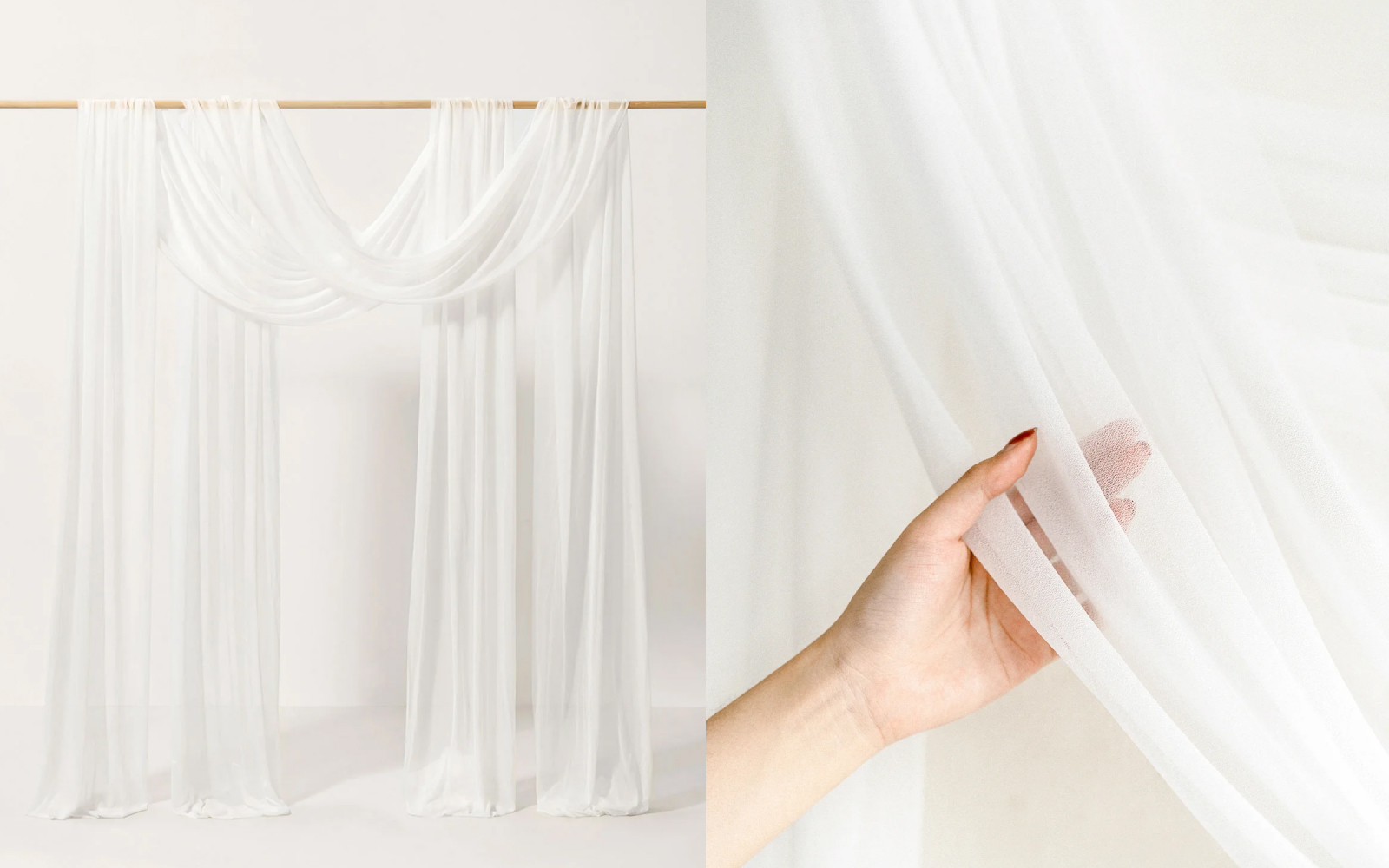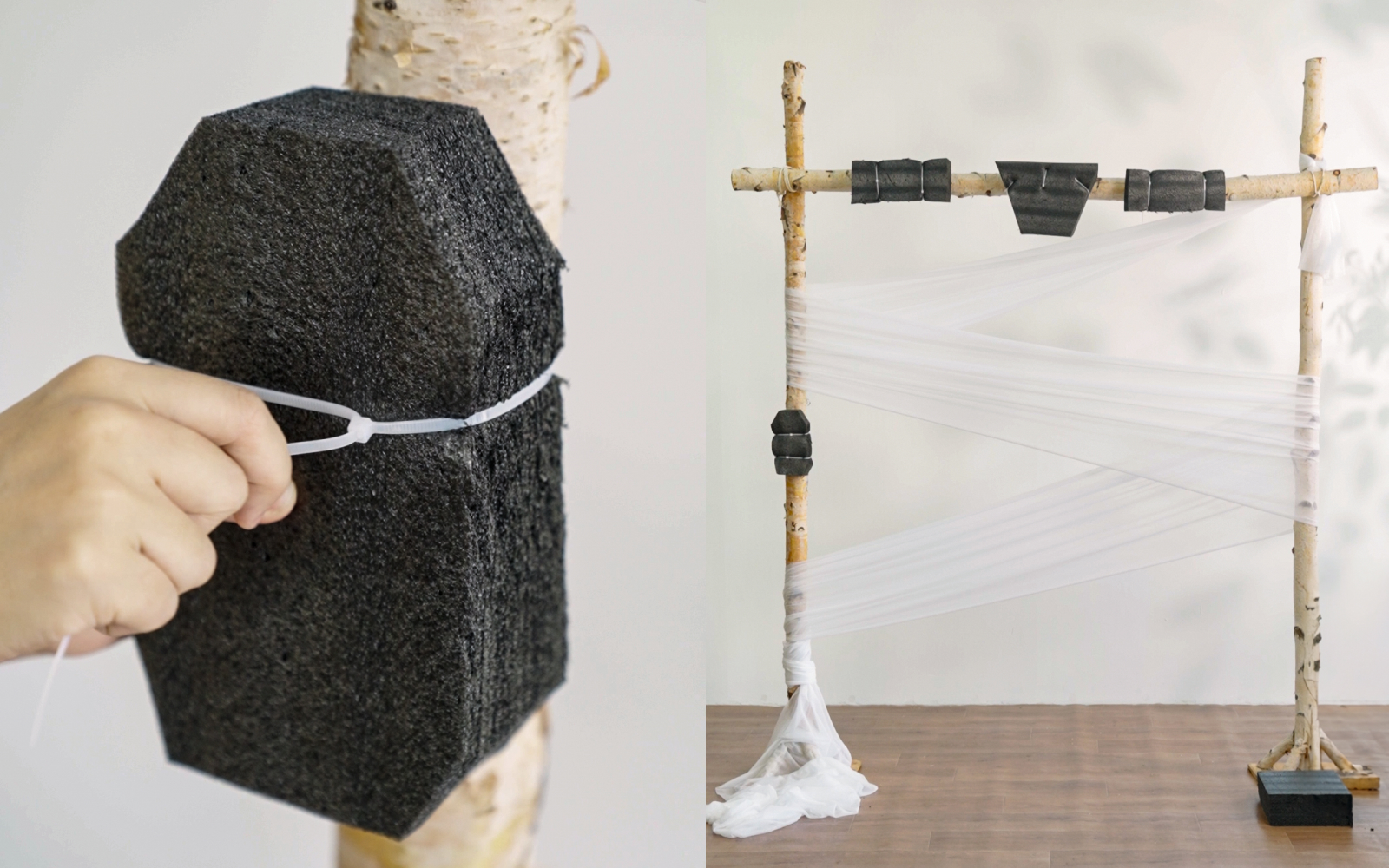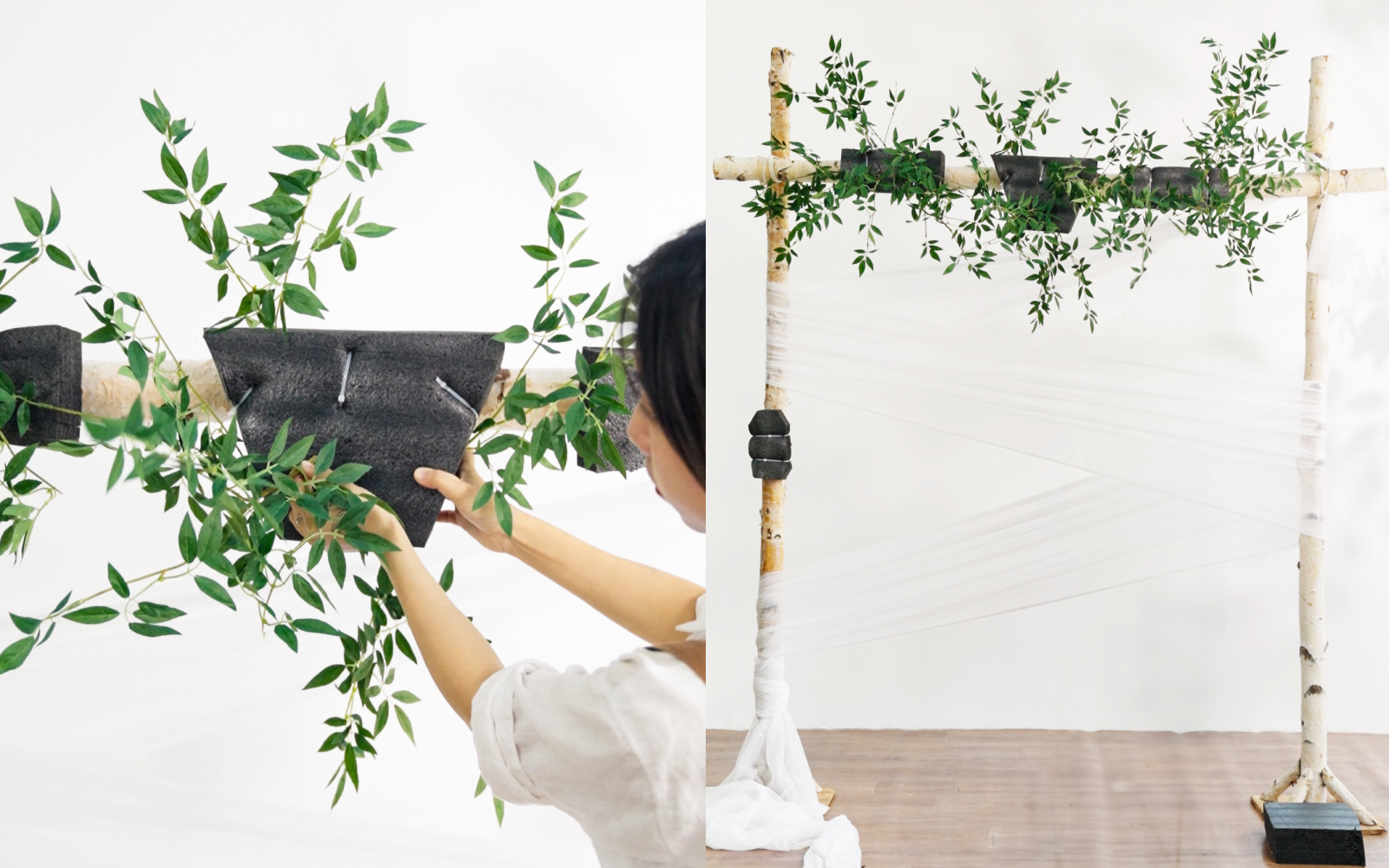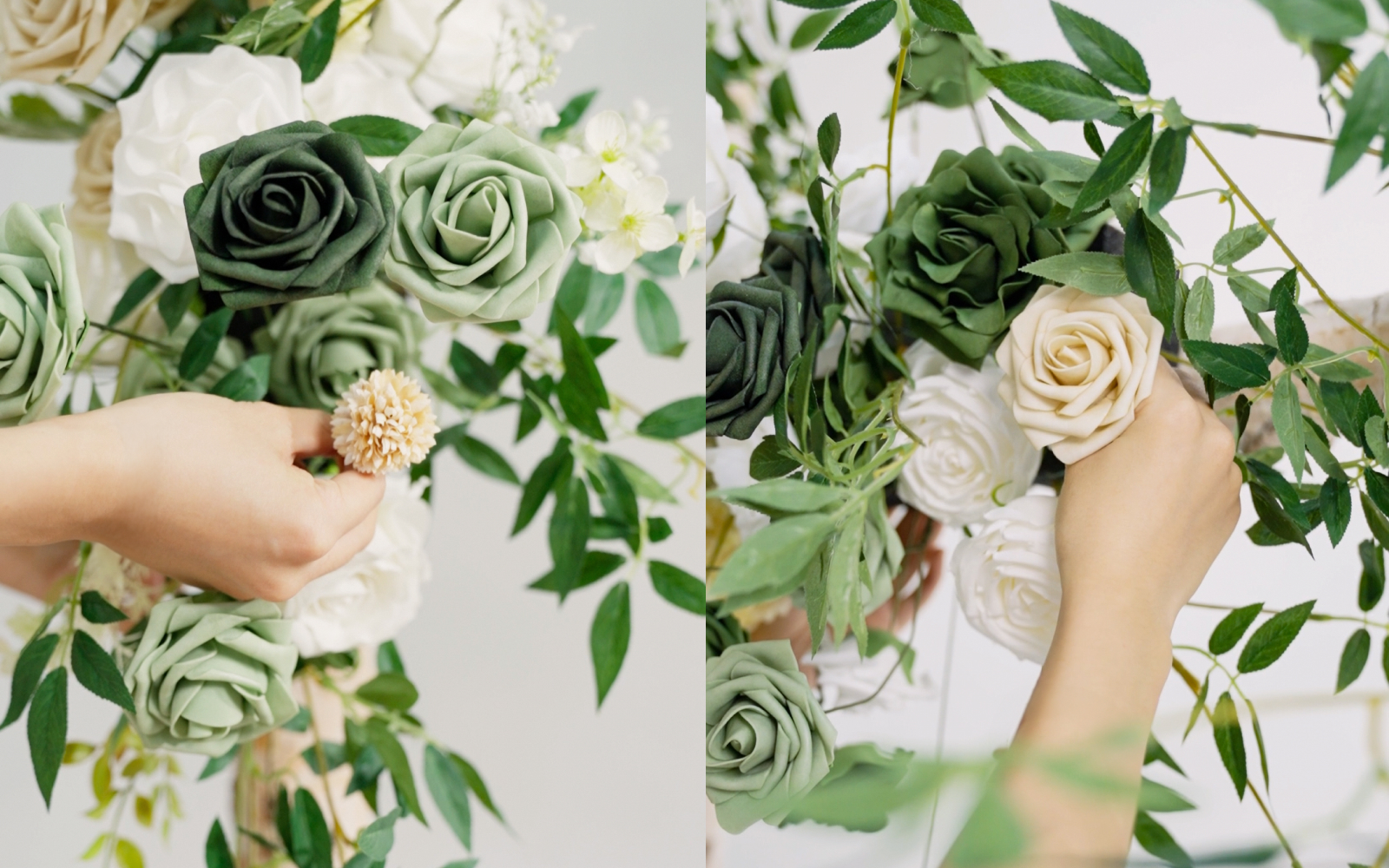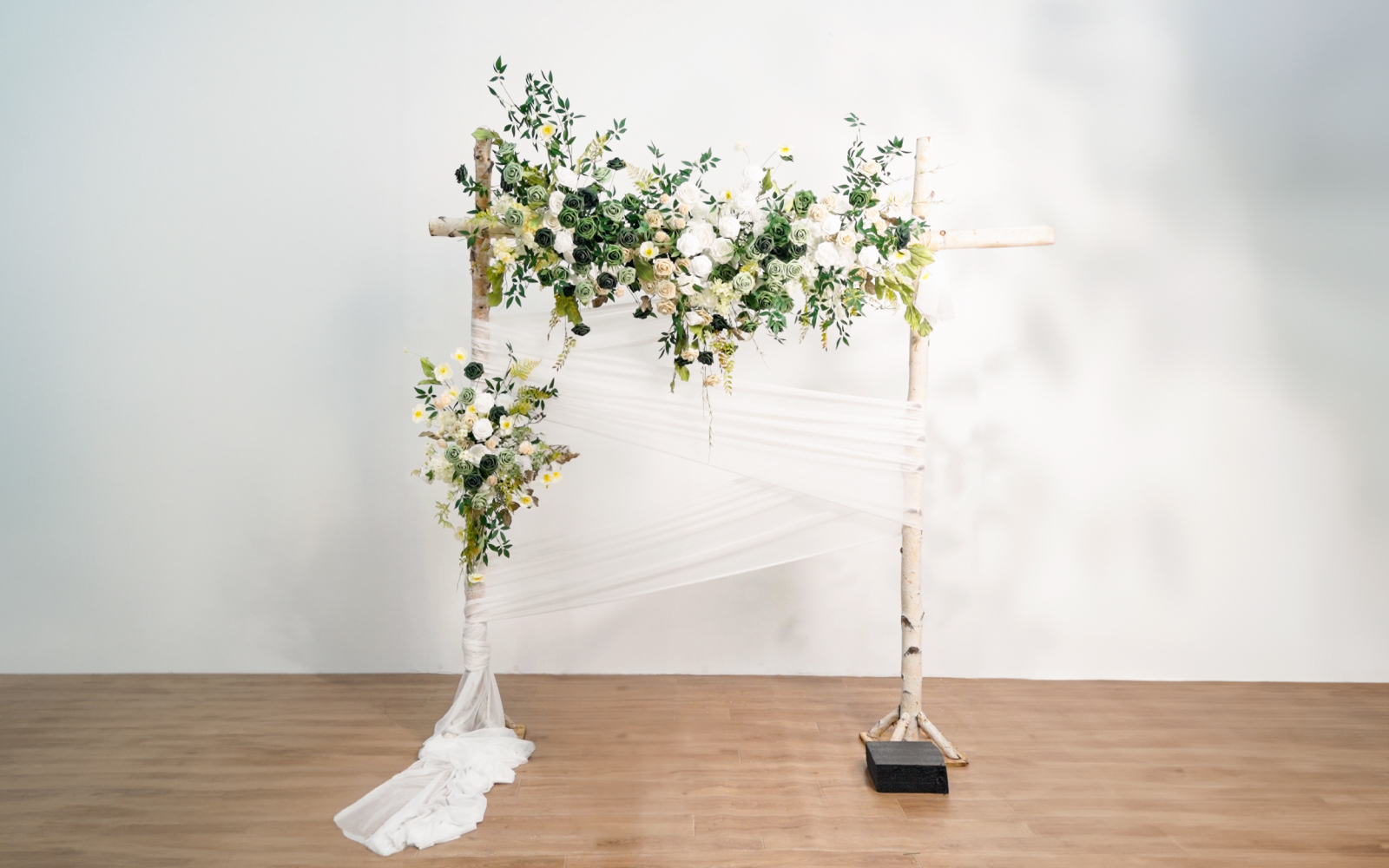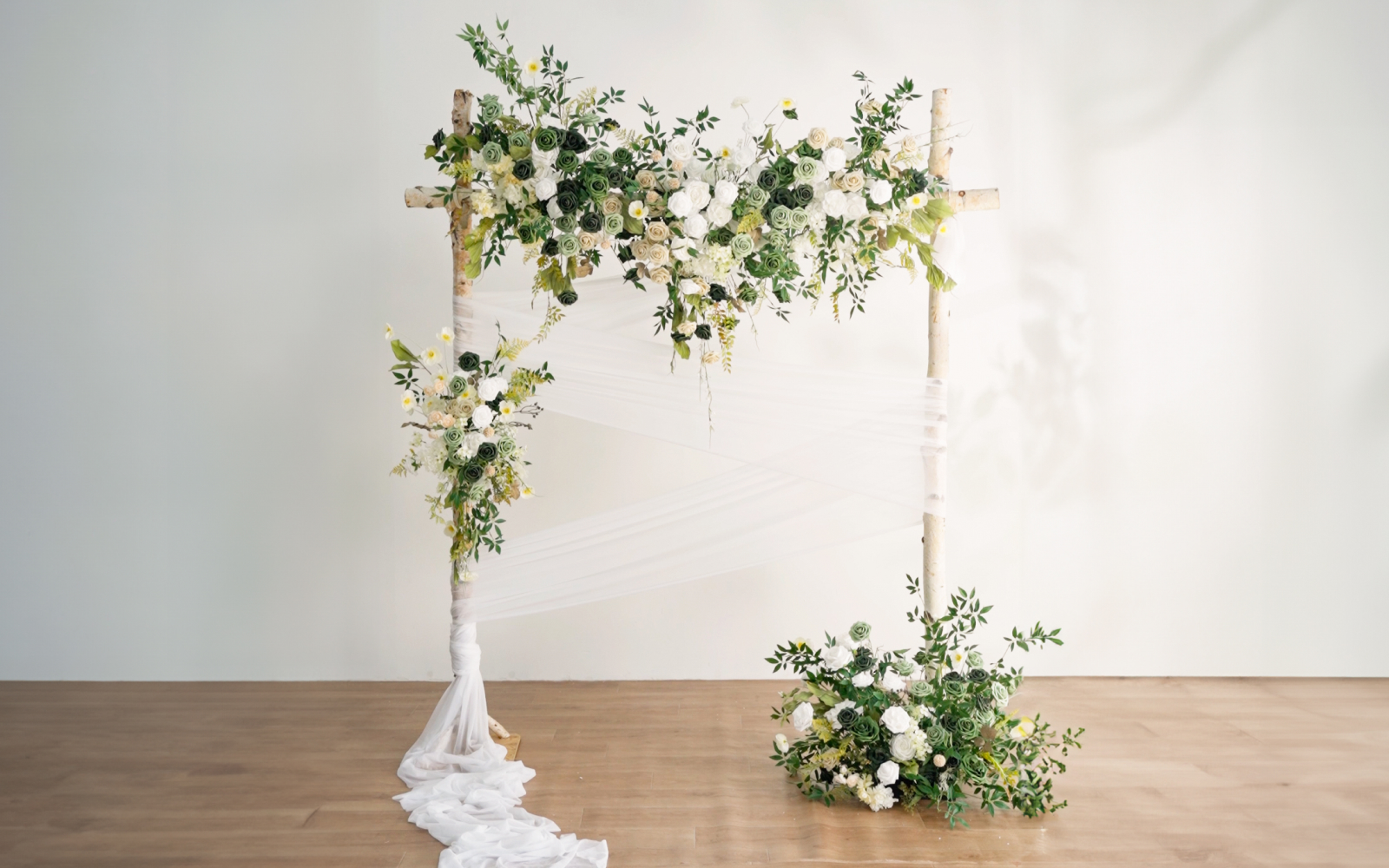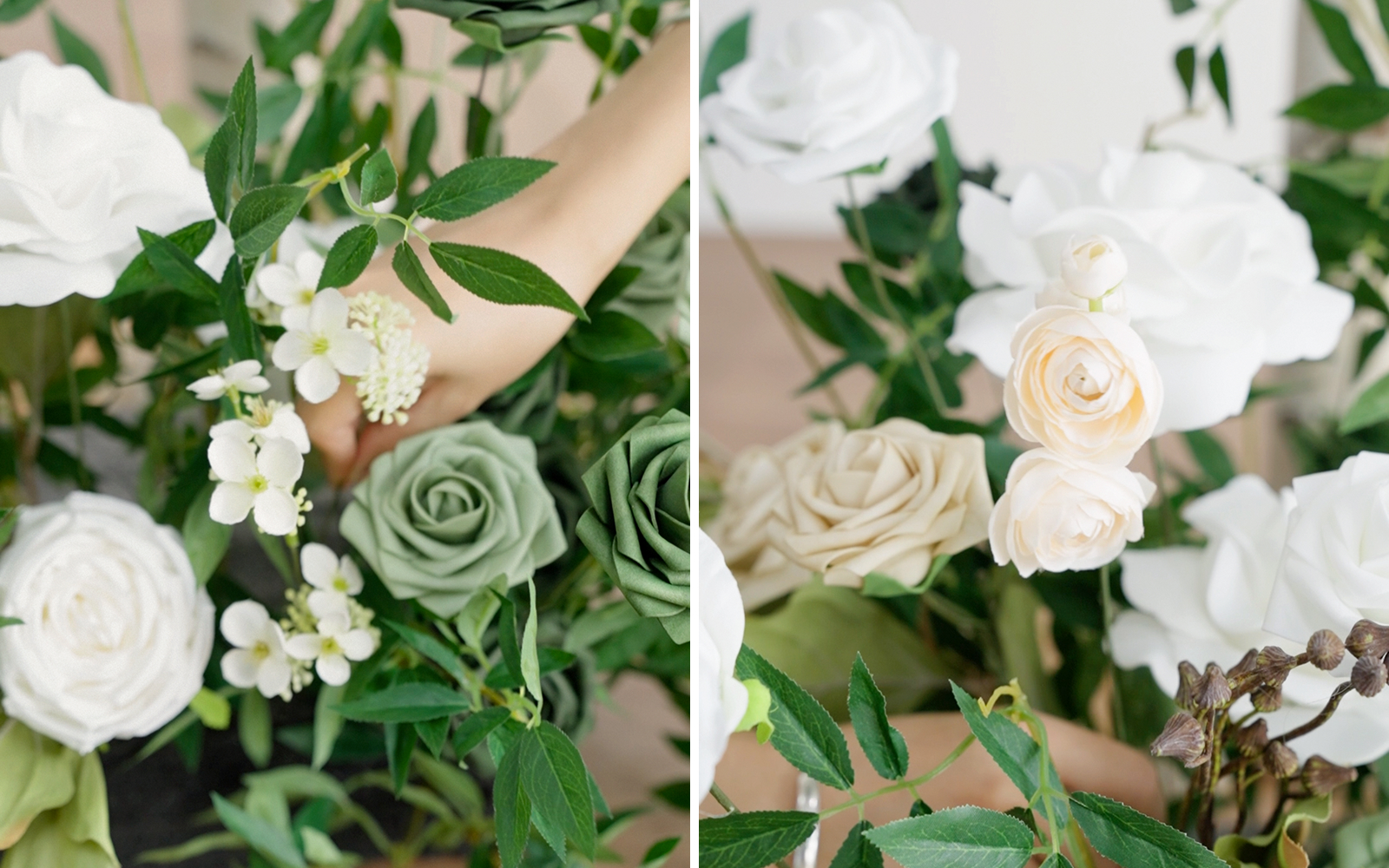DIY White & Sage Wedding Floral Arch Tutorial— Step-by-Step Floral Styling Guide
Dreaming of a romantic, natural wedding arch in soft sage and creamy white? In this tutorial, we'll show you exactly how to create this refined, airy ceremony focal point—step by step.
Supply List: What you'll need to DIY This Wedding Arch
Accent Combo in Dusty Green x2
DIY Designer Flower Boxes in Emerald Green & Tawny Beige x10
Floral Foam x5
Arch Frame x1
Cable Ties
Step 1. Choose Drapes that Complement Your White & Sage Palette
The foundation of any elegant arch starts with the right fabric choice. White sheer fabric creates the soft, romantic backdrop that makes your florals pop while maintaining that airy feel.
For warmer tones, try champagne, nude, or soft blush. The key is ensuring your draping feels like a natural extension of your floral palette rather than competing with it.
Pro tip: Consider your venue's lighting when choosing fabric. For outdoor ceremonies, slightly heavier fabrics prevent excessive movement in the breeze, while indoor setups can handle the most delicate sheers.
Step 2. Pre-Visualize and Shape Your Floral Installation
Before placing any flowers, map out the shape and flow of your arrangement. A beautiful arch doesn't follow a stiff, straight line—we recommend a soft arc or gentle dip in the center, as it adds movement and depth.
Use floral foam to anchor your stems, but first cut it into curved shapes that match your desired layout. Then, secure the foam blocks onto the arch using zip ties, making sure they follow your sketched line. This step ensures your flowers will drape naturally, instead of feeling flat or forced.
Step 3. Build Structure and Texture with Greenery stems
Use Greenery stems to Set the Silhouette
Start by shaping the visual flow of your arch with long greenery stems. Think of these as your floral architecture. For a natural, organic cascade shape, place stems in radiating patterns that flow outward and downward. This step defines your floral boundary before any blooms are added.
Mixing Leaf Types for Texture and Depth
Don't stop at one type of foliage. Use broad leaves like Rosa Banksiae to fill volume at the base, then layer in Eucalyptus for soft movement, Dusty Miller for tonal variation, and Fern for an airy, lacy texture. Alternate between tight clusters and open space to prevent a flat, heavy look.
Step 4. Build Your White & Sage Palette with Intentional Flower Choices
Design with Tonal Harmony
Tonal harmony means staying within one color family for a cohesive, sophisticated look. In this white and sage palette, we're working with whites, creams, soft greens, and muted beiges—all colors that naturally complement each other.
This approach creates elegance through restraint. Let texture and flower variety provide interest rather than bold color contrasts.
Create a Soft Flow with Transitional Blooms
When pairing flowers from different color families—like rich green Jade and Emerald Roses with creamy White Roses—use bridging flowers to create smooth color transitions.
Sage green and soft beige blooms act as the "stepping stones" between your lightest and darkest elements. This technique prevents jarring color jumps and creates that seamless, professional look.
Step 5. Create Visual Flow from Top to Ground
Add Sculptural Details to the Sides
Rather than centering everything, add a sculptural side element—we used a teardrop shape on the left side. This creates visual movement and prevents the static look of perfect symmetry.
Use trailing elements like long, wispy greens and delicate wildflowers to create the illusion of natural growth and movement.
Ground It with an Overgrown Base
The magic happens at ground level. Create a scattered flower meadow effect by placing florals and greenery at varying heights around the arch base. This technique dissolves the boundary between your arch and the surrounding space.
Using Wispy Leaves and Wildflowers for Airiness
Airiness is what elevates a floral design from heavy to heavenly. Add delicate finishing touches using baby's breath, Dancing-lady Orchid, Ranunculus, and Hydrangea. These airy ingredients fill gaps without adding bulk, giving your arch a soft, breezy finish.
Style According to Venue Type
Since this example was set indoors, we styled the surroundings with natural candles, a woven mat, and scattered petals. These tactile, cozy elements enhance the romance of an interior ceremony. For outdoor setups, try incorporating lanterns, hanging ribbons, or ground-level floral puddles that blend with nature.
Final Thoughts & Design Variations
This white and sage arch demonstrates timeless elegance through thoughtful design choices. The key principles—tonal harmony, organic flow, and textural variety—work for any color palette.
Start your project with our complete flower kits, which include everything you need for professional results. Follow these techniques, adapt the colors to your vision, and create a ceremony backdrop that's uniquely yours.
Let's make it unforgettable—one stem at a time.





